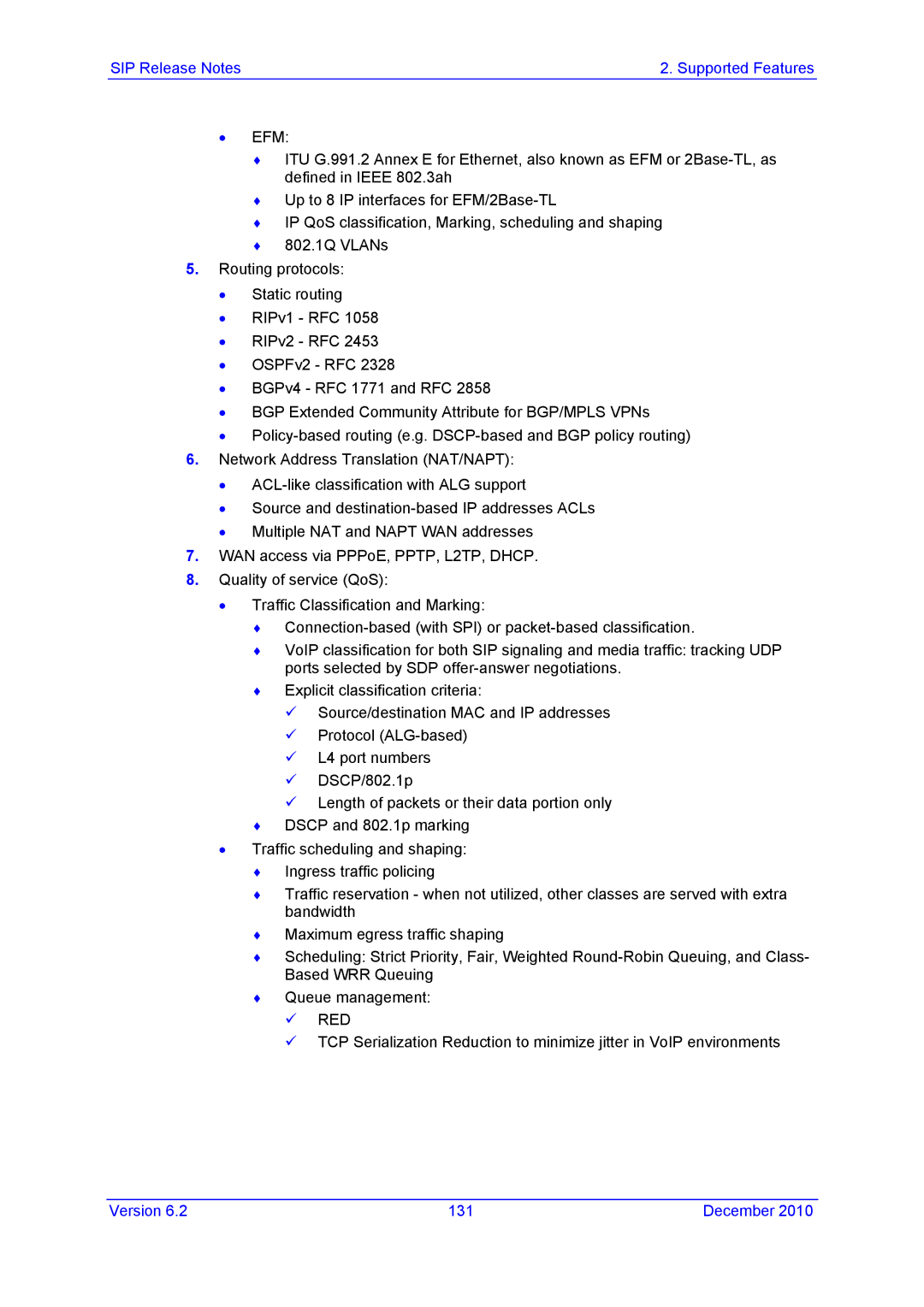SIP Release Notes | 2. Supported Features |
•EFM:
♦ITU G.991.2 Annex E for Ethernet, also known as EFM or
♦Up to 8 IP interfaces for
♦IP QoS classification, Marking, scheduling and shaping
♦802.1Q VLANs
5.Routing protocols:
•Static routing
•RIPv1 - RFC 1058
•RIPv2 - RFC 2453
•OSPFv2 - RFC 2328
•BGPv4 - RFC 1771 and RFC 2858
•BGP Extended Community Attribute for BGP/MPLS VPNs
•
6.Network Address Translation (NAT/NAPT):
•
•Source and
•Multiple NAT and NAPT WAN addresses
7.WAN access via PPPoE, PPTP, L2TP, DHCP.
8.Quality of service (QoS):
•Traffic Classification and Marking:
♦
♦VoIP classification for both SIP signaling and media traffic: tracking UDP ports selected by SDP
♦Explicit classification criteria:
Source/destination MAC and IP addresses
Protocol
L4 port numbers
DSCP/802.1p
Length of packets or their data portion only
♦DSCP and 802.1p marking
•Traffic scheduling and shaping:
♦Ingress traffic policing
♦Traffic reservation - when not utilized, other classes are served with extra bandwidth
♦Maximum egress traffic shaping
♦Scheduling: Strict Priority, Fair, Weighted
♦Queue management:
RED
TCP Serialization Reduction to minimize jitter in VoIP environments
Version 6.2 | 131 | December 2010 |
